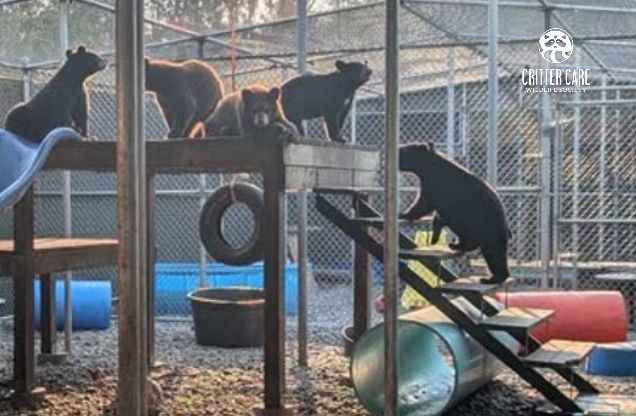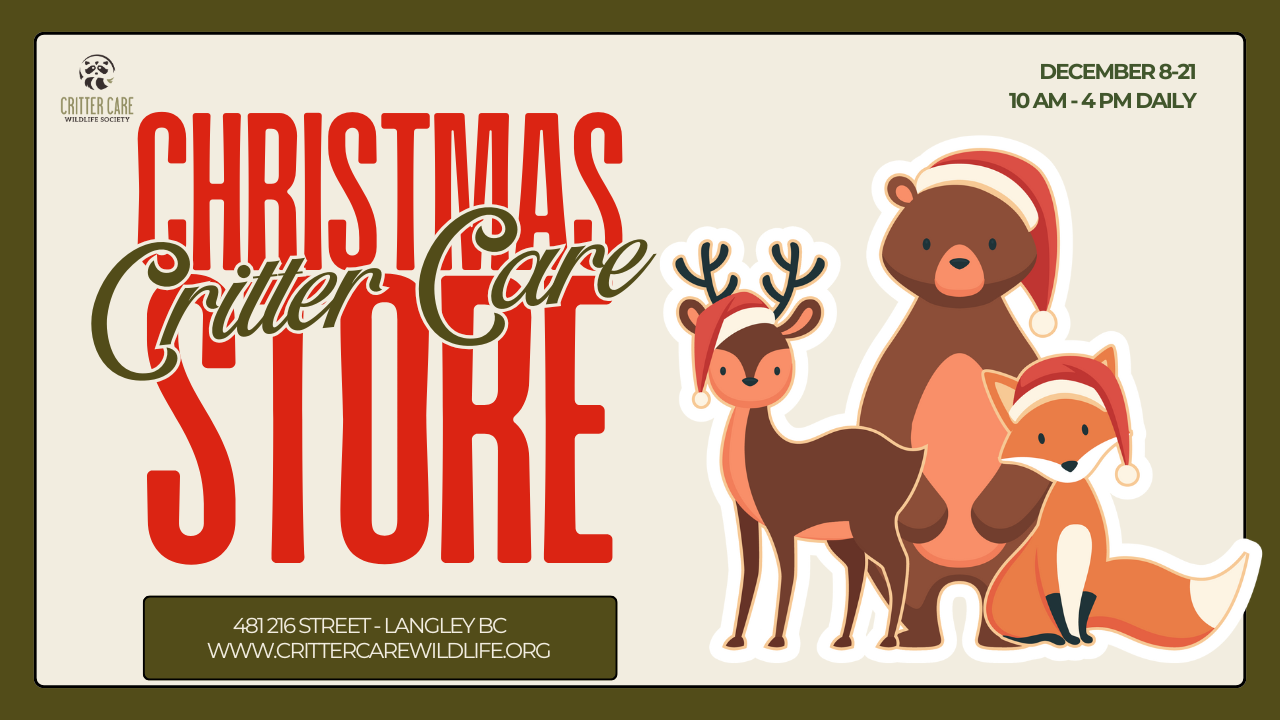How Critter Care Rescues and Rehabilitates Orphaned Bears
At Critter Care Wildlife Society, rescuing orphaned bear cubs is no small task. Emma Robson*, Junior Wildlife Supervisor and Head Bear Supervisor, shares the process of how Critter Care steps in to give these vulnerable cubs a second chance at life.
Responding to an Orphaned Cub Call
When Critter Care receives a call about an orphaned cub, the team first gathers important details. They ask about the bear’s location, how long it’s been seen, and whether a mother has been spotted. From there, they work with BC Conservation to get permission to bring the cub into care.
Capturing a bear is tricky since even young cubs are incredibly strong. Live traps baited with food are the safest and least stressful way to rescue them. The traps are placed where the cub has been seen most often, and once the bear is captured, the team responds quickly to bring it into care.
Caring for Rescued Cubs
Once at Critter Care, each cub receives a full exam with minimal handling to reduce stress. If the cub has an injury or illness, the team can sedate it and provide antibiotics or anti-inflammatory medication. The cub is then placed either indoors for observation or in an outdoor enclosure to adjust to its new environment. Slowly introducing cubs to each other helps them socialize naturally.
Preparing for Release
Releasing the bears back into the wild happens after spring hunting season, in coordination with BC Conservation and the provincial government. This gives the bears the best chance of survival in their natural environment.
How You Can Help
Emma reminds us that human activity, like leaving out garbage, often draws bears into unsafe situations. Securing trash and food sources can help protect bears and reduce human-bear conflict.
Watch Emma’s full story and check out Inside Critter Care: The Mission to Rescue, Rehabilitate, and Release BC Wildlife – Watch here.
*Editor’s Note: Emma is no longer with Critter Care Wildlife Society. We’re grateful for her past contributions to our mission of rescuing and rehabilitating wildlife.
Critter Care Wildlife Society News
Sign up to get inspiring stories of rescue,
rehabilitation and release from Critter Care
Be the first to receive our newsletter, new blog posts, and updates
about our most critical needs and community news.



